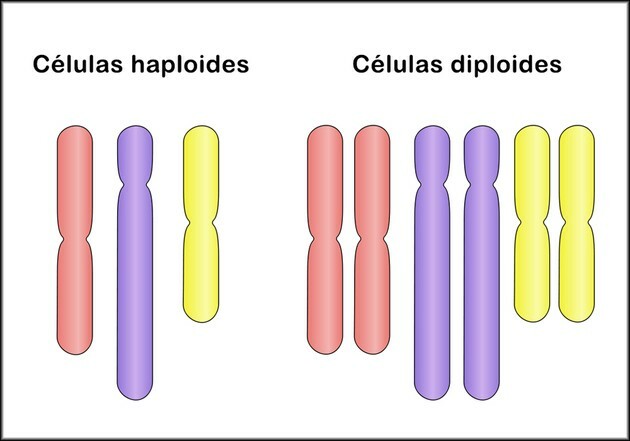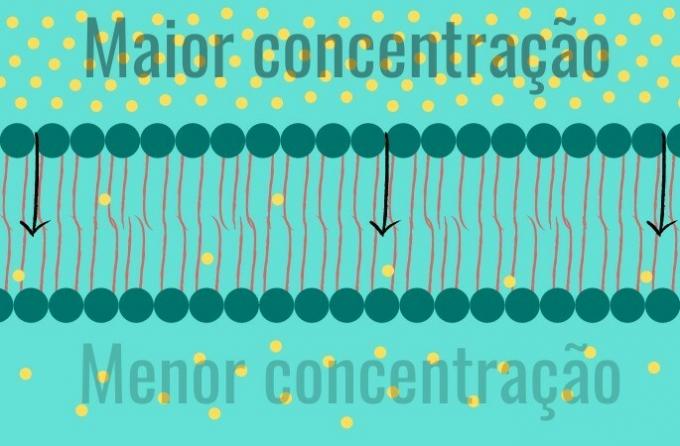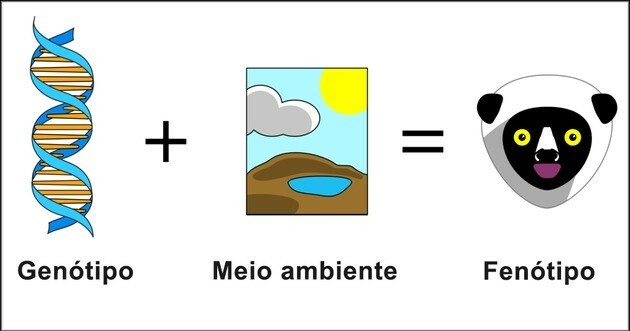Haploid cells and diploid cells are two types of cells found in the body. Their biggest difference is related to the number of chromosomes each cell contains: While diploid cells contain two chromosomes (2n), haploid cells contain one chromosome (1n).
| diploid cells | haploid cells | |
|---|---|---|
| Definition | Diploid cells are those that contain two complete sets of chromosomes (2n). | Haploid cells contain only one complete set of chromosomes, i.e., half the number of chromosomes (n). |
| cell division | Diploid cells reproduce by the process of mitosis, producing daughter cells that are exactly alike. | Haploid cells reproduce by meiosis, a type of cell division where diploid cells divide to generate haploid cells. |
| Organisms | Humans and most animals are considered diploid organisms. | Algae and fungi are examples of organisms that are haploid for most of their lives. Male bees, wasps and ants are also haploid. |
| example of cells | Diploid cells are found in skin, blood, and muscle cells or somatic cells. | Haploid cells are found in sperm and egg cells (also known as gametes). |

Which cells are haploid and diploid?
In humans, somatic cells are diploid cells, containing two sets of chromosomes (2n). These cells can be found in skin, blood, and muscle cells. The number of chromosomes (n) differs in different organisms, and in humans, the complete set (2n) comprises 46 chromosomes.
Haploid cells are found in gametes or germ cells, and contain only one set of chromosomes (n). An example of haploid cells are the cells found in sperm and egg cells.
Cell division and reproduction
division by meiosis
All animal cells have a fixed number of chromosomes in their cells, which exist in homologous (2n) pairs. Chromosome pairs are formed by one chromosome from the mother and the second from the father. During the process of meiosis, diploid (2n) cells divide to produce haploid cells, each containing only one set of chromosomes (n).
The number of chromosomes returns to 2n during fertilization, when the male and female gametes fuse to form the zygote.
This process does not occur in organisms that reproduce through asexual processes, such as bacteria. In plant cells, however, this haploid phase, where it contains only one "n", constitutes a large part of its life cycle.
division by mitosis
Cell growth is the result of mitosis, a process by which parent cells divide to give rise to identical haploid daughter cells containing an identical number of chromosomes.
This process differs in different cell types. While animal cells undergo open mitosis, with the breakdown of the nuclear membrane, other organisms such as fungi and yeast undergo closed mitosis, keeping their nuclear membrane intact.
See the difference between Mitosis and Meiosis.
In short
1. A haploid cell has only one set of chromosomes (n), while diploid cells have two sets of chromosomes (2n).
2. In humans, somatic cells are diploid, while gametes are haploid.
3. Diploid cells develop as a result of mitotic cell division, while haploid cells develop as a result of meiotic cell division.
4. Mitosis produces 2 identical daughter cells, where both the mother and daughter cells are diploid. In meiosis, a diploid cell divides twice to produce 4 haploid daughter cells.
5. Humans and most animals are considered diploid organisms, while algae and fungi are examples of organisms that are haploid for most of their lives. Male bees, wasps and ants are also haploid.
See also the difference between:
- Animal cell and plant cell
- Viruses, bacteria and fungi
- DNA and RNA
- Simple and easy distribution



